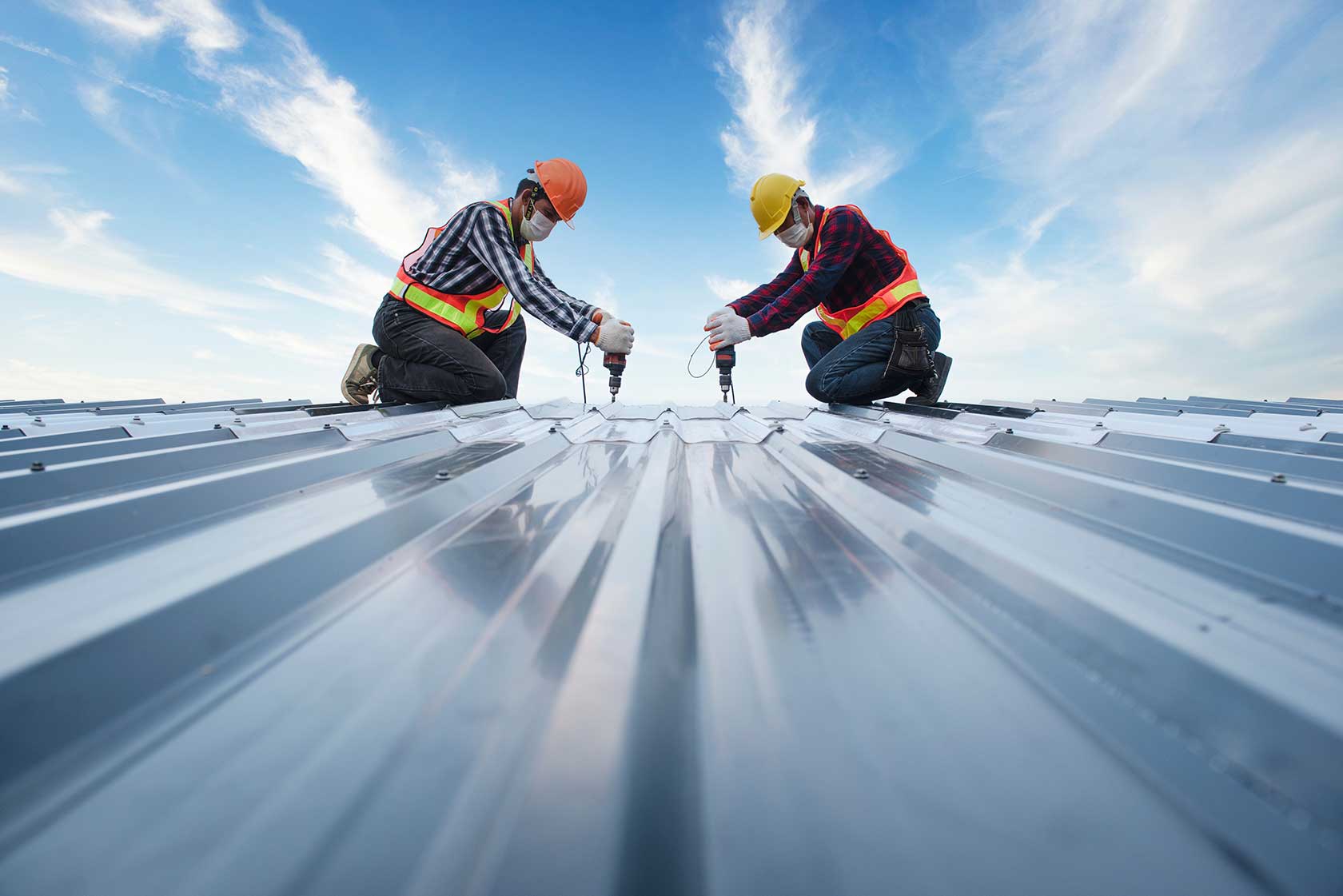The world of commercial roofing has seen significant changes over the years. It’s a story of evolution from basic protective structures to highly sophisticated systems integrating sustainability and cutting-edge technology.
This article takes you through this evolution, highlighting the significant shifts and innovations that have redefined commercial roofing and hinting at the promising future ahead. Let’s delve in.
Historical Perspective On Commercial Roofing
Taking a step back in time, commercial roofing was a bare-bones affair. With a focus on practicality and affordability, buildings were crowned with simple, functional roofs made from materials readily available. In fact, the history of commercial roofing is a chronicle of human resourcefulness as we wrangled with whatever materials we had on hand.
In the beginning, there were ‘Built-Up Roofs,’ popularly known as BURs.
Picture a lasagna, but instead of pasta, cheese, and sauce, you have layers of bitumen (a sticky, black, highly viscous liquid) and reinforcing fabric. This roofing delicacy was then topped with a layer of gravel or stone to shield it from the sun. Voila, you had a roof that was resilient, waterproof, and surprisingly effective.
As we moved further into the industrial age, the 1960s, and 70s saw the rise of single-ply membranes, like Ethylene Propylene Diene Monomer (EPDM). It was the era of “rubber roofs,” and for a good reason.
EPDM is essentially a synthetic rubber that offers excellent resistance to weathering, ozone, and UV radiation. These roofs were easier to install and maintain than their bitumen-based predecessors.
Then came the modified bitumen roofs in the 1970s, offering better flexibility and weather resistance to homeowners. It’s pretty similar to the BUR but enhanced with modifiers like atactic polypropylene (APP) or styrene-butadiene-styrene (SBS).
The result? A more rigid and resilient roofing system that could withstand the rigors of the commercial environment.
Eco-Conscious Shift: The Rise Of Sustainable Commercial Roofing
This eco-conscious shift was no less than a revolution in commercial roofing.
It all began with the growing realization of our environmental footprint. As the impact of construction on our planet became more apparent, the roofing industry found itself at a crossroads.
The choice was clear: continue down the same path, contributing to the environmental crisis, or step up and become part of the solution. Thankfully, the industry chose the latter, ushering in the era of sustainable commercial roofing.
But What Does Sustainable Roofing Look Like?
Imagine a roof that does more than keep the elements out of your property. A roof that contributes to the energy efficiency of the building reduces waste and even creates habitats for wildlife. That’s the power of sustainable commercial roofing. For instance, take cool roofing systems.
These are roofs designed to reflect more sunlight and absorb less heat than a standard roof. By doing so, they reduce the need for air conditioning, cutting down on energy consumption and the associated emissions.
Then you have green roofs, which are literally gardens in the sky. Not only do they insulate the building, but they also create habitats for insects and birds, all while making our cities a little greener.
Cities like Calgary have been at the forefront of this eco-conscious shift. The commercial roofing in Calgary showcases sustainable practices, utilizing the latest materials and technologies to create roofing systems that are as good for the wallet as they are for the planet.
Cutting-Edge Innovations In Commercial Roofing
Just when you thought roofing couldn’t be exciting, here comes the age of innovation. Fueled by the momentum of the eco-conscious shift, the commercial roofing industry exploded with cutting-edge advancements.
The rooftops of our buildings were no longer just layers of bitumen and gravel. They transformed into complex systems where science, engineering, and environmental stewardship converged.
One of the game-changers in this revolution was the rise of Thermoplastic Olefin (TPO) and Polyvinyl Chloride (PVC) roofing systems.
These materials came as a breath of fresh air. TPO and PVC roofs offered superior longevity, weather resistance, and, most importantly, recyclability. These were roofs you could use, reuse, and then use some more.
But the innovation wasn’t just in the materials. Technology made its grand entry onto the roofing scene, turning our buildings into power-generating entities.
Solar panels found their way onto commercial rooftops, offering a renewable source of energy, reducing reliance on the grid, and offering significant cost savings over time.
Then there were cool roofs. These roofs were designed to reflect more sunlight and absorb less heat through reflective paints, tiles, or shingles. The result? A cooler building that required less energy for air conditioning, translating to smaller utility bills and reduced greenhouse gas emissions.
Roofing Reimagined: Envisioning The Future Of Commercial Roofing
The future of commercial roofing is also seeing a growing interest in biodegradable and recyclable materials. Researchers are experimenting with everything from mushroom roots to recycled ocean plastic in the quest for the ultimate eco-friendly roofing material. These advancements could dramatically reduce the environmental impact of roof installation and disposal.
And then there’s the thrilling prospect of self-healing roofing materials. Picture a roof that could fix minor cracks and holes all by itself, prolonging its life and reducing maintenance costs. This isn’t just a pipe dream – scientists are already developing self-healing concrete and polymers that could make this a reality.
The future of commercial roofing is undeniably exciting for all of us, with a focus on sustainable, efficient, and intelligent solutions. It’s a testament to our growing understanding of our environmental responsibility and our relentless creativity to meet our needs.
Wrapping Up
In a nutshell, the story of commercial roofing is a tale of continuous evolution. From a basic shelter in its early days to becoming an active contributor to environmental sustainability, commercial roofing has redefined its purpose and impact.
As we stand on the threshold of an exciting future filled with intelligent, efficient, and environmentally-friendly roofing solutions, it’s clear that the roof isn’t just about protection anymore. It’s about making a difference – one building, city, and planet at a time.







